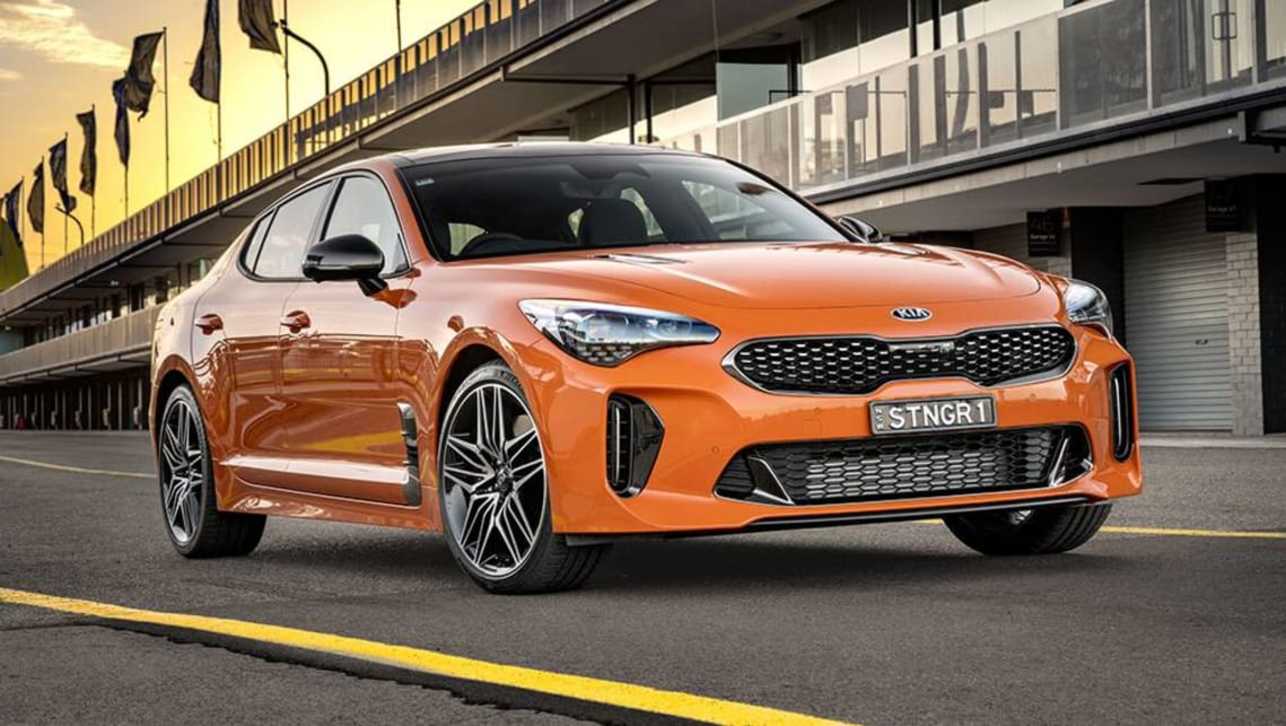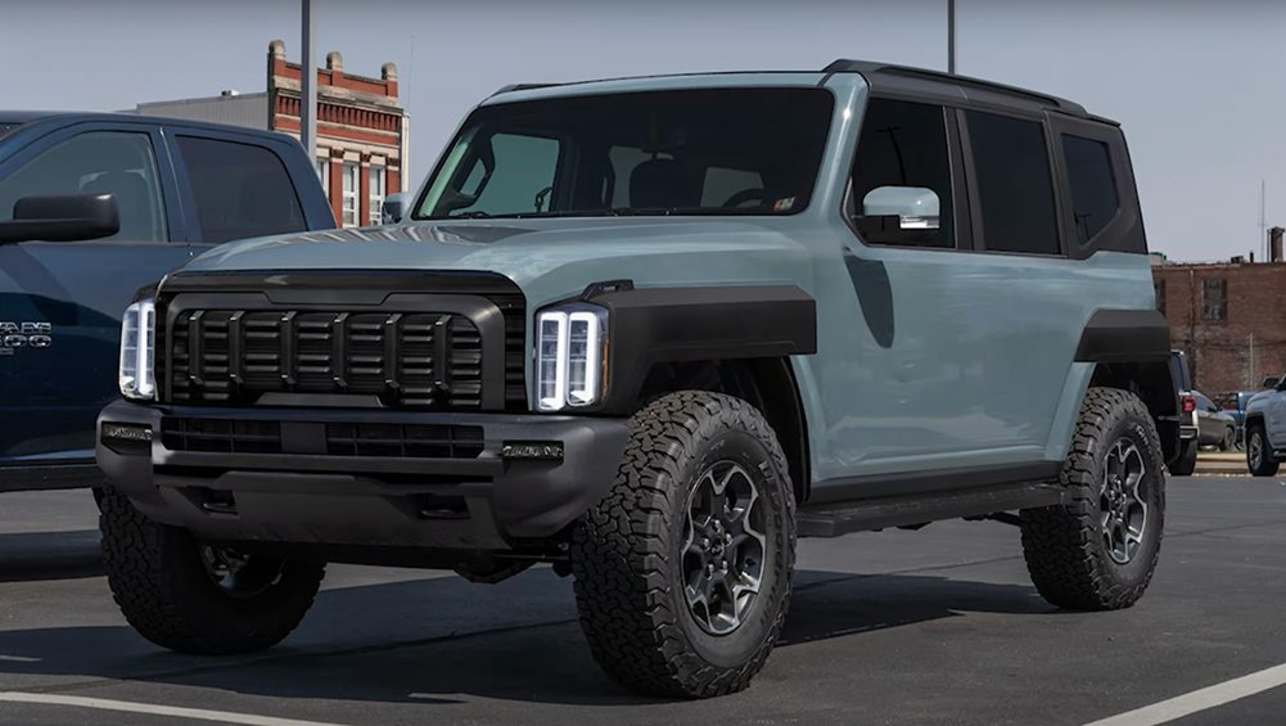Along with pandemics, shortages and natural disasters, this year will also be remembered for the premature execution of several high-profile models.
We're talking about models that could not meet Australia’s strict new Australian Design Rule (ADR) 85/00 rules that came into effect from November 1, focussing on side impact safety in the event of an accident.
Victims include Lexus’ athletic IS and its pretty RC coupe, CT200h hatch, the supernaturally fun Alpine A110, and Nissan's GT-R supercar, as stocks of these were limited and are now depleted.
But the cull isn’t over in 2022 for other reasons, with several more models getting the chop because of their age or stage in their pre-set lifecycle.
So, without further ado, here are a list of current models that aren’t expected to see 2023 in.
Volkswagen 2H Amarok (OG)

Sure, the Amarok lives on as a Ford T6.2 Ranger-based truck for its MY23 redesign, but not the brilliant 2010-generation original that was engineered by Volkswagen Nutzfahrzeuge (commercial vehicle division) in Germany.
Popular in Australia (around 8000 4x4 models will be registered last year) but selling a fraction of the 90,000 units annually mooted back in the early days, the Amarok nevertheless set a high watermark for refinement, driveability, comfort and – with the V6 option – performance that has still yet to be matched by most competitors today.
Until the Ranger-derived replacement surfaces, the VW also remains the only truck in its class that can accommodate an Aussie palette without modification. For these and other reasons, fans of car-like one-tonners will cry for this Argentinean-built (or Hannover-made, depending on model) pick-up.
Honda Odyssey
.jpg)
If there ever was a car that ended up being a shadow of its former self, then this is it.
Honda has finally pulled the plug on its Odyssey people mover, despite an extensive facelift during 2020 that saw worthwhile updates and improvements.
But these were too little and too late against powerhouse rivals like the latest Kia Carnival and Hyundai Staria, which prove that style and substance can be had in a properly roomy and practical people mover. After a glittering, award-winning career over its first four incarnations, it’s time to bid goodbye to the outgoing Odyssey.
And if another one is under development as the rumour mill suggests, Honda’s recent impressive return to form with the 2022 Civic might even bode well next time around, so we’re hoping the brand isn’t giving up people movers altogether.
BMW i3s

Besides Tesla’s Model S, has there been an interior presentation more copied during the last decade than BMW’s first fully-electric production hatchback?
Boldly packaged, beautifully styled and breathtakingly ambitious at the time, the i3 was also a beacon of hope for brand traditionalists during BMW’s dynamic malaise era due to its fabulously sharp steering and adroit handling.
But high prices and low range in both the REX range-extender and EV versions also meant it was also debilitatingly flawed, while the improved i3s from 2018 suffers from hard suspension. A modern classic very much of its era. Thank you, BMW.
Chrysler 300

In November, Stellantis announced the cessation of right-hand-drive Chryslers worldwide, meaning the brand disappears again (and possibly forever but never say never), after nearly a century of representation and decades of vehicle manufacturing in this country.
The final model, of course, is the second generation of the modern 300 series – a curious relic of the failed old DaimlerChrysler partnership around the time of the millennium that saw Mercedes-Benz E- and S-Class platform components underpinning a very American gangster-style rear-drive sedan, along with big V8 power in SRT versions. Truly unique.
A big seller up until comparatively recently, the Chrysler 300 is also the final affordable V8 family sedan available in Australia – just like the Adelaide-built 1957 Chrysler Royal with its 5.1-litre (313 cubic-inch) polyspherical-head V8 was one of the first. A handful of new cars remain in dealers going into 2022, so you better be quick for this last slice of automotive history.
Kia Stinger

Now, let’s make this clear: Kia Motors Australia denies that there are plans to drop the marvellous Stinger sports liftback next year.
But speculation out of South Korea earlier this year suggested that parts suppliers have notified that production will wind up in the second half of 2022.
We sincerely hope this does not happen, as the Stinger is now the sole affordable rear-drive sports sedan on the market, and deserves to live on indefinitely. It’s the closest thing we have to a modern Holden VF Commodore or Ford Falcon XR6, so if you’re thinking about replacing either one of those classic bits of Australiana, then off to the Kia dealer you go.
You never know – such unsubstantiated rumours may create a run on Stingers that saves the breed. Was it not Mark Twain who was supposed to have said something about reports of his death being greatly exaggerated? Let’s hope, like that misquote, it’s all fake news.
Mazda MX-5 1.5
.jpg)
Don’t worry. The MX-5/Miata line lives on, and with a big revamp due sometime within the next couple of years to boot.
But we’re calling out Mazda Australia’s decision to kill off the purest and cheapest version of the world’s best-ever selling sports car, the dinky little 1.5-litre four-cylinder engine. Revvy, spirited and sweet, it captures the essence of the inexpensive roadster best of all.
Yet, come early next year, stock will start depleting as the boats carrying the ND 1.5L stop heading to Australia. The bigger 2.0L engine is still great too, but it costs more and weighs more, and these fly in the face of the MX-5’s spirit.
Mazda, please, just don’t kill the series off altogether.
Skoda Fabia wagon
.jpg)
It’s the end of the line in Australia for the B-segment wagon – a once-popular body style as evidenced by the large numbers of Datsun 120Y wagons sold locally.
There won’t be a wagon version of the next-gen Fabia, as that role has been more than ably taken over by the Kamiq, but the big loss here is that the latter is much more expensive.
So, it’s back to the second-hand market for budget small wagon shoppers. Maybe that’s why we’re seeing so many ex-Japan Toyota Fielder Hybrid wagons running around our big cities nowadays.
Mitsubishi Mirage

After a decade of making the ASX seem Lexus-like, the cheapest new Mitsubishi on the market will quietly slip away by the middle of 2022.
A victim of the federal government’s new side-impact safety requirements, the Thai-built LB Mirage is a price leader with a leading warranty and low running costs – as opposed to a sporty and dynamic hatch/coupe that made its previous namesake – the CE Mirage – one of Australia’s most loved bargain buys.
With such a great heritage and no replacement in sight despite an inexplicable surge in sales recently (money talks obviously), it’s a shame Mitsubishi won’t be giving the affordable city-car dice another roll at any time soon. The nameplate deserves to be remembered better than what the dreary old outgoing Mirage offers.


.jpg)
.jpg)
.jpg)


.jpg)


.jpg)

.jpg)


.jpg)
.jpg)

.jpg)
.jpg)
.jpg)
.jpeg)


.jpg)


.jpg)


Comments